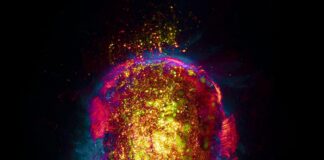Ray tracing is a technique in computer graphics that simulates the way light interacts with objects to produce highly realistic images. Since its introduction, ray tracing has become synonymous with photorealism in rendering, transforming how light and shadows are depicted in digital environments. The impact of ray tracing is profound, from enhancing visual effects in movies to creating immersive gaming experiences. Ray tracing enables accurate reflections, refractions, and global illumination, making scenes come alive with unprecedented detail and realism. As the technology evolves, ray tracing continues to push the boundaries of what is visually achievable in digital art.
Ray tracing works by tracing the path of light rays as they travel through a scene. When a ray encounters an object, the algorithm calculates the interactions, such as reflection off surfaces, refraction through transparent materials, and absorption by objects. By simulating these interactions, ray tracing can produce highly detailed and accurate images. The complexity and computational power required for ray tracing have traditionally limited its use to offline rendering for movies and static images. However, recent advancements in hardware and software have made real-time ray tracing feasible, revolutionizing gaming and interactive applications.
1. Fundamentals of Ray Tracing
Ray tracing begins by casting rays from a camera or viewer’s perspective into a scene. These rays intersect with objects in the environment, where the algorithm determines how they interact with the surfaces they hit. This process involves calculating intersections, shading, and the recursive tracing of secondary rays to simulate reflections and refractions. The core principles of ray tracing include:
Ray generation: Rays are cast from the camera into the scene.
Intersection testing: Determining where rays intersect with objects.
Shading: Calculating the color and intensity of light at intersection points.
Recursion: Tracing secondary rays to simulate reflections, refractions, and shadows.
2. Historical Development
The concept of ray tracing has been around since the 1960s, but it was in the 1980s and 1990s that significant advancements were made. Early implementations were computationally intensive and limited to academic research and high-end visual effects. The introduction of more efficient algorithms and the development of powerful hardware gradually made ray tracing more accessible. Significant milestones include:
Whitted-style ray tracing: Introduced by Turner Whitted in 1980, this approach included reflections, refractions, and shadows.
Distributed ray tracing: Extended the basic algorithm to handle effects like motion blur and depth of field.
Monte Carlo ray tracing: Used probabilistic methods to simulate global illumination and complex lighting scenarios.
3. Real-Time Ray Tracing
Recent advancements in graphics hardware, particularly the introduction of GPUs with dedicated ray tracing cores, have made real-time ray tracing a reality. Technologies like NVIDIA’s RTX and AMD’s Radeon Rays leverage hardware acceleration to perform ray tracing calculations efficiently. This development has had a significant impact on gaming, enabling more realistic lighting, shadows, and reflections in real-time. Key components of real-time ray tracing include:
Ray tracing cores: Specialized hardware units designed to accelerate ray tracing calculations.
Hybrid rendering: Combining traditional rasterization with ray tracing for optimal performance.
Optimization techniques: Methods such as denoising and sample reduction to achieve real-time performance.
4. Applications in Gaming
Ray tracing has revolutionized the gaming industry by bringing a new level of realism to in-game graphics. Games like “Minecraft,” “Cyberpunk 2077,” and “Control” have showcased the potential of real-time ray tracing, with lifelike reflections, accurate shadows, and dynamic lighting. The benefits of ray tracing in gaming include:
Enhanced reflections: Accurately depicting reflections on surfaces, including curved and rough surfaces.
Improved shadows: Soft shadows with realistic penumbra effects and accurate contact shadows.
Dynamic global illumination: Realistic lighting that changes based on the environment and light sources.
5. Ray Tracing in Visual Effects and Animation
In the film industry, ray tracing has been a cornerstone of visual effects (VFX) and animation for decades. It enables the creation of photorealistic CGI, blending seamlessly with live-action footage. Ray tracing’s ability to simulate complex lighting scenarios and intricate details makes it indispensable for high-quality visual effects. Key aspects include:
Photorealistic rendering: Producing images that are indistinguishable from real-life footage.
Accurate simulations: Replicating natural phenomena like caustics, subsurface scattering, and volumetric lighting.
Integration with live-action: Blending CGI with live-action shots to create seamless and immersive scenes.
6. Architectural Visualization and Design
Ray tracing is also widely used in architectural visualization to create realistic renderings of buildings and interiors. Architects and designers use ray tracing to visualize lighting, materials, and spatial relationships accurately. This application aids in design decision-making and client presentations by providing lifelike previews of projects. Benefits include:
Realistic lighting: Simulating natural and artificial light sources to evaluate their impact on spaces.
Material accuracy: Rendering materials with true-to-life properties, including textures, reflections, and transparency.
Interactive walkthroughs: Allowing clients to experience virtual spaces with realistic lighting and shadows.
7. Challenges and Limitations
Despite its advantages, ray tracing faces several challenges and limitations. The primary challenge is the high computational cost, which requires significant processing power and memory. Real-time ray tracing, while advanced, still involves trade-offs between performance and visual quality. Other challenges include:
Noise: Ray tracing can produce noisy images, especially with limited sample counts.
Performance: Achieving real-time performance without compromising quality remains difficult.
Complexity: Implementing ray tracing algorithms requires a deep understanding of mathematics and physics.
8. Future Prospects and Innovations
The future of ray tracing looks promising, with ongoing research and development aimed at overcoming current limitations and expanding its capabilities. Innovations in hardware, such as more powerful GPUs and dedicated ray tracing units, will continue to drive performance improvements. Software advancements, including more efficient algorithms and better denoising techniques, will enhance visual quality and accessibility. Emerging trends include:
AI-driven denoising: Using machine learning to reduce noise and improve image quality in real-time ray tracing.
Hybrid rendering advancements: Combining ray tracing with other rendering techniques for optimal results.
Broader adoption: Increasing use of ray tracing in various industries, including automotive design, virtual reality, and scientific visualization.
9. Educational and Training Opportunities
As ray tracing technology evolves, there is a growing need for education and training to equip professionals with the necessary skills. Educational institutions and online platforms offer courses and tutorials on ray tracing, covering topics from basic principles to advanced implementations. These resources help developers, artists, and engineers understand and leverage ray tracing in their projects. Key educational aspects include:
Comprehensive curricula: Covering the fundamentals, algorithms, and practical applications of ray tracing.
Hands-on training: Providing practical experience with ray tracing software and tools.
Community support: Encouraging collaboration and knowledge sharing through forums and online communities.
10. Industry Standards and Collaboration
The development and adoption of ray tracing technology benefit from industry standards and collaboration. Organizations like the Khronos Group and the Academy Software Foundation work to establish standards and frameworks that ensure compatibility and interoperability across different platforms and tools. Collaborative efforts drive innovation and make ray tracing technology more accessible and robust. Key initiatives include:
Open standards: Developing standards like Vulkan Ray Tracing to promote cross-platform compatibility.
Collaborative projects: Encouraging joint efforts between hardware manufacturers, software developers, and researchers.
Open-source tools: Providing access to ray tracing tools and libraries to foster innovation and experimentation.
Ray tracing continues to be a driving force in the advancement of computer graphics, offering unparalleled realism and detail in rendered images. As technology progresses, the applications and impact of ray tracing are expected to expand further, transforming how we create and experience digital content across various industries. From gaming and film to architecture and design, ray tracing remains at the forefront of visual innovation, pushing the boundaries of what is possible in digital art and interactive media.
In conclusion, ray tracing stands as a groundbreaking technology in computer graphics, offering unparalleled realism and detail in rendering. By accurately simulating the behavior of light, ray tracing creates lifelike images with realistic reflections, refractions, and shadows, transforming visual experiences across various fields. The evolution of ray tracing from an academic concept to a practical tool in real-time applications has been driven by significant advancements in both hardware and software. Technologies like NVIDIA’s RTX and AMD’s Radeon Rays have enabled real-time ray tracing, revolutionizing the gaming industry and setting new standards for visual fidelity.
Ray tracing’s impact extends beyond gaming to industries such as film, where it has been instrumental in creating photorealistic visual effects and seamless CGI integration. In architecture and design, ray tracing aids in producing accurate visualizations, enhancing design processes and client presentations. Despite its computational challenges, the future of ray tracing is promising, with ongoing innovations aimed at improving performance, reducing noise, and expanding its capabilities.
The growing need for education and training in ray tracing is being addressed through comprehensive courses and hands-on experiences, preparing professionals to leverage this technology effectively. Industry standards and collaborative efforts are also crucial in promoting compatibility and innovation, ensuring that ray tracing technology continues to advance and become more accessible.
As ray tracing technology progresses, its applications and influence are expected to broaden, further transforming digital content creation and interactive media. From enhancing the realism of virtual worlds in gaming and film to improving architectural visualization and design, ray tracing remains at the forefront of visual innovation, continually pushing the boundaries of what is possible in computer graphics.














